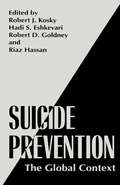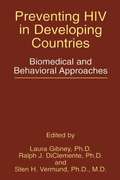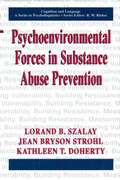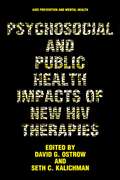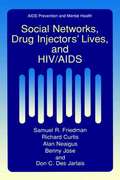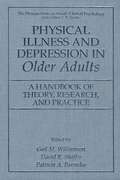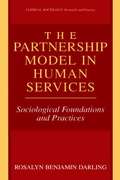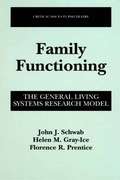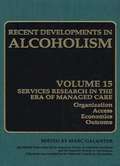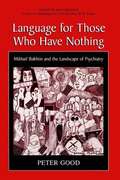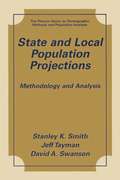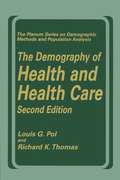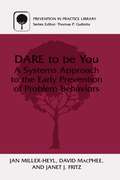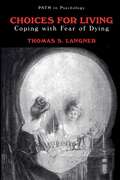- Table View
- List View
Suicide Prevention: The Global Context
by Robert J. Kosky Hadi S. Eshkevari Robert D. Goldney Riaz HassanProceedings of the XIXth Congress of the International Association for Suicide Prevention held in Adelaide, Australia, March 23-27, 1997
Preventing HIV in Developing Countries: Biomedical and Behavioral Approaches (Aids Prevention and Mental Health)
by Sten H. Vermund Ralph J. Clemente LauraGibneyGlobally, action to prevent HIV spread is inadequate. Over 16,000 new infections occur every day. Yet we are not helpless in the face of disaster, as shown by the rich prevention experience analyzed in this valuable new compendium. “Best pr- tice” exists—a set of tried and tested ways of slowing the spread of HIV, of persuading and enabling people to protect themselves and others from the virus. Individually, features of best practice can be found almost everywhere. The tragedy, on a world scale, is that prevention is spotty, not comprehensive; the measures are not being applied on anywhere near the scale needed, or with the right focus or synergy. The national response may concentrate solely on sex workers, for example. Elsewhere, efforts may go into school education for the young, but ignore the risks and vulnerability of men who have sex with men. Action may be patchy geographically. AIDS prevention may not benefit from adequate commitment from all parts and sectors of society, compromising the sustainability of the response. In some countries matters are still worse—there is still hardly any action at all against AIDS and scarcely any effort to make HIV visible. It is no wonder that the epidemic is still emerging and in some places is altogether out of control.
Psychoenvironmental Forces in Substance Abuse Prevention (Cognition and Language: A Series in Psycholinguistics)
by Lorand B. Szalay Jean Bryson Strohl Kathleen T. DohertyPsychological vulnerabilities and environment influences are the most powerful forces shaping the behavior and choices of students to use harmful substances. This book employs computer-assisted Associative Group Analysis technology of comparative imaging and cognitive mapping to identify these factors and offers new perspectives for more comprehensive risk assessments and effective prevention.
Psychosocial and Public Health Impacts of New HIV Therapies (Aids Prevention and Mental Health)
by David G. Ostrow Seth C. Kalichman“AIDS is kind of like life, just speeded up. ” JavonP. ,heroinaddictwithAIDS, Bronx,NewYork, 1988 “Now I’m not so much scared of dying as scared of living. ” Mike D. , heroin addict with AIDS, New Haven, Connecticut, 1998 Within little more than a decade, AIDS has been tranformed from an untreatable, rapidly fatal illness, into a manageable, chronic disease. Most of this tranformation has occurred in the past five years, accelerated by the advent of protease inhibitors and the proven benefits of combination antiretroviral therapy and prophylaxis against opportunistic infections. For people living with HIV/AIDS, these developments have offered unprecedented hope, and also new challenges. As reflected in the quotes above, some of the anxieties and anticipation of premature dying have been replaced by the uncertainties involved in living with a long-term, unpredictable illness. The role of caregivers for people with HIV/AIDS has also changed radically over this time. Earlier in the epidemic, we learned to accompany patients through illness, to bear witness, to advocate, to address issues of death, dying, and - reavement. The arrival of more effective therapy has brought with it new capabi- ties, but also new complexities, raising difficult problems concerning access to care, adherence, and toxicity.
Social Networks, Drug Injectors’ Lives, and HIV/AIDS (Aids Prevention and Mental Health)
by Samuel R. Friedman Richard Curtis Alan Neaigus Benny Jose Don C. Des JarlaisSocial Networks, Drug Injectors' Lives, and HIV/AIDS recognizes HIV as a socially structured disease - its transmission usually requires intimate contact between individuals - and shows how social networks shape high-risk behaviors and the spread of HIV. The authors recount the groundbreaking use of social network methods, ethnographic direct-observation techniques, and in-depth interviews in their study of a drug-using community in Brooklyn, New York. They provide a detailed documentary of the lives of community members. They describe drug-use, the affects of poverty and homelessness, the acquisition of money and drugs, and social relationships within the group. Social Networks, Drug Injectors' Lives, and HIV/AIDS shows that social networks and contexts are of crucial importance in understanding and fighting the AIDS epidemic. These findings should revitalize prevention efforts and reshape social policy.
Language, Thought, and the Brain (Cognition and Language: A Series in Psycholinguistics)
by Tatyana B. GlezermanDrawing on a wide variety of modern and classical sources and multiple disciplines, this book presents hypothesizes about the relationship between human language and thought to brain specialization. The authors focus on aphasia-language disorder resulting from local brain damage and show that the clinical aspect represents not only loss of function of the damaged area, but also results from the interaction between damaged and intact areas of the brain.
Neuropsychological Interpretation of Objective Psychological Tests (Critical Issues in Neuropsychology)
by Charles J. Golden Patricia Espe-Pfeifer Jana Wachsler-FelderThe inter-comparison of specific skills as represented by performance on neu- psychological tests is at the heart of the neuropsychological assessment process. However, there is a tendency to regard the interpretation of single tests as a process that is independent of performance on other tests, with integration of test information representing a summary of these individual test performances. As neuropsychology has become increasingly sophisticated, it has been recognized that many factors influence the performance on any given test. The meaning of the same score may vary considerably from one person to another, depending on his or her performance on other neuropsychological tests. Thus, a low score on the Halstead Category Test may indeed reflect frontal lobe damage, but only if we first rule out the influence of visual-spatial problems, emotionality, attentional issues, motivation, fatigue, and comprehension of the instructions. Simplistic interpre- tions that assume a common interpretation based on a specific score will inva- ably lead to errors in interpretation and conclusions. The purpose of this book is to provide each test that is described with a compendium of the possible interpretations that can be used with a variety of common tests that are often included in a neuropsychological test battery. The first chapter discusses some of the pitfalls and cautions when comparing the tests, while the second chapter examines administrative and scoring issues that may be unclear or unavailable for a given test.
Physical Illness and Depression in Older Adults: A Handbook of Theory, Research, and Practice (The Springer Series in Social Clinical Psychology)
by Gail M. WilliamsonWith people living longer, often with chronic illnesses and disabilities, it is becoming increasingly important to understand how depression, disability, and physical illnesses are interrelated, the mechanisms underlying these interrelationships, and their implications for diagnosis and treatment. This volume synthesizes a carefully selected portion of the knowledge about physical illness and depression that has emerged during the past twenty years.
The Partnership Model in Human Services: Sociological Foundations and Practices (Clinical Sociology: Research and Practice)
by Rosalyn Benjamin DarlingThis book provides students and practitioners with a theoretical and methodological foundation for implementing client- and family-centered `partnership' approaches in human services. Unlike other texts in the field, the author integrates the principles and practices of sociology with applied work in the helping professions and shows how key sociological concepts can be used to explain the nature of clients' perspectives and expand client opportunities.
Healthcare Development Strategies in the Kingdom of Saudi Arabia
by Mohammed H. MuftiThis work deals with the current health policy environment, organization and delivery of health services in the Kingdom of Saudi Arabia. It discusses present financing means, and future financing methods such as a proposed national health insurance program and user-changes as well as important strategic issues. It is for healthcare directors, planners and strategists and will be of interest to experts and international investors in health system reorganization.
Family Functioning: The General Living Systems Research Model (Critical Issues in Psychiatry)
by John J. Schwab Helen Gray-Ice Florence R. PrenticeThe family, that most fundamentalof human groups, is currently perceived to be changing in response to social, biological, cultural and technological developments in our postmodernsociety. While the observed changes in families have been considered by some sociologists to be evidence of adaptation and, therefore, normal, the authors of this volume, consider them maladaptive. Viewing society from the point of view of clinical psychiatry, they point to greatly increased numbers of children born to single mothers, soaring rates of divorce, a statistically confirmed increase in mental disorders, increase in reported incest, high rates of depression in younger people and escalation of the amount of reported family violence as evidence that the family, as a social institution, is in crisis and can either move toward renewed vitality or continued deterioration. Perceiving a need to obtain information about family functioning that might lead to the increased stability and well-being of this critically important type of system, Dr. John Schwab and his associates designed and camed out a research program that began with a thorough review of relevant literature beginning with LePlay’s study of 300 families in the 1850’sand including important recent statistical studies. They found that although these studies represent advances in understanding the family system, some serious problems with the research remain, one of which is confounding variables such as family function and mental or substance abuse disorders so that if a family member has a problem, such as drug abuse, the family is classifiedasdysfunctional.
Alcoholism: Services Research in the Era of Managed Care (Recent Developments in Alcoholism #15)
by Marc GalanterFrom the President ofthe Research Society onAlcoholism - On behalf of the Research Society on Alcoholism I welcome the important contri bution that Volume 15 of this excellent series on Recent Developments in Alcoh- ism brings to our field. It is not enough for our scientists to develop effective and efficient methods to identify and treat alcohol abuse and alcohol dependence; the availability of these services is often limited and it is certainly nonexistent for the early problem drinker. In nineteen outstanding chapters, Volume 15 deals with organizational issues concerning access to and delivery of substance abuse treatment and the role of managed care. Several chapters deal with economic issues, cost-benefits, and - nancing of these services. Lastly, five address recent treatment outcome studies. Thus, this volume will be of great value to both scientists and practitioners. The Editor and Associate Editors are congratulated for this conceptual and organi- tional accomplishment. Yedy Israel, Ph.D.
Language for Those Who Have Nothing: Mikhail Bakhtin and the Landscape of Psychiatry (Cognition and Language: A Series in Psycholinguistics)
by Peter GoodThe aim of Language for those who have Nothing is to think psychiatry through the writings of Mikhail Bakhtin. Using the concepts of Dialogism and Polyphony, the Carnival and the Chronotope, a novel means of navigating the clinical landscape is developed. Bakhtin offers language as a social phenomenon and one that is fully embodied. Utterances are shown to be alive and enfleshed and their meanings realised in the context of given social dimensions. The organisation of this book corresponds with carnival practices of taking the high down to the low before replenishing its meaning anew. Thus early discussions of official language and the chronotope become exposed to descending levels of analysis and emphasis. Patients and practitioners are shown to occupy an entirely different spatio-temporal topography. These chronotopes have powerful borders and it is necessary to use the Carnival powers of cunning and deception in order to enter and to leave them. The book provides an overview of practitioners who have attempted such transgression and the author records his own unnerving experience as a pseudopatient. By exploring the context of psychiatry's unofficial voices: its terminology, jokes, parodies, and everyday narratives, the clinical landscape is shown to rely heavily on unofficial dialogues in order to safeguard an official identity.
Suicide Prevention: A Holistic Approach
by Armin Schmidtke D. De Leo René F. W. DiekstraSuicide Prevention: A Holistic Approach contains the selected and edited papers that were presented during the congress Suicide, Disease, Disadvantage, A Holistic Approach, organized by the International Association for Suicide Prevention, which was held in June 1995, in Venice. Suicide prevention is still sadly neglected by governments and public health authorities, despite the fact that in several Western countries suicide has become the primary cause of death among younger age groups. The selected papers express the need for a holistic viewpoint in suicide management. The subjects range from parasuicide to the role of the media, from the special type of psychotherapeutic approach required to the most recent guidelines in pharmacological treatment, from a homage to the memory of Erwin Ringel to the presentation of specific national prevention schemes. The book will be of interest to public health workers, doctors, psychologists and social workers, as well as voluntary staff and their organizations, and to all those who make suicide prevention one of their primary interests.
A Critique of Nicotine Addiction (Neurobiological Foundation of Aberrant Behaviors #2)
by Hanan Frenk Reuven DarNicotine is almost universally believed to be the major factor that motivates smoking and impedes cessation. Authorities such as the Surgeon General of the USA and the Royal College of Physicians in the UK have declared that nicotine is as addictive as heroin and cocaine. This book is a critique of the nicotine addiction hypothesis, based on a critical review of the research literature that purports to prove that nicotine is as addictive drug. The review is based on a re-examination of more than 700 articles and books on this subject, including animal and human experimental studies, effects of `nicotine replacement therapies', and many other relevant sources. This review concludes that on present evidence, there is every reason to reject the generally accepted theory that nicotine has a major role in cigarette smoking. A critical examination of the criteria for drug addiction demonstrates that none of these criteria is met by nicotine, and that it is much more likely that nicotine in fact limits rather than facilitates smoking.
Suicide Science: Expanding the Boundaries
by Thomas Joiner M. David RuddSuicide kills and maims victims; traumatizes loved ones; preoccupies clinicians; and costs health care and emergency agencies fortunes. It should therefore demand a wealth of theoretical, scientific, and fiduciary attention. But in many ways it has Why? Although the answer to this question is multi-faceted, this volume not. supposes that one answer to the question is a lack of elaborated and penetrating theoretical approaches. The authors of this volume were challenged to apply their considerable theoretical wherewithal to this state of affairs. They have risen to this challenge admirably, in that several ambitious ideas are presented and developed. Ifever a phenomenon should inspire humility, it is suicide, and the volume’s authors realize this. Although several far-reaching views are proposed, they are pitched as first approximations, with the primary goal of stimulating still more conceptual and empirical work. A pressing issue in suicide science is the topic of clinical interventions, and clinical approaches more generally. Here too, this volume contributes, covering such topics as therapeutics and prevention, comorbidity, special populations, and clinicalrisk factors.
State and Local Population Projections: Methodology and Analysis (The Springer Series on Demographic Methods and Population Analysis)
by Stanley K. Smith Jeff Tayman David A. SwansonThe initial plans for this book sprang from a late-afternoon conversation in a hotel bar. All three authors were attending the 1996 meeting of the Population As- ciation of America in New Orleans. While nursing drinks and expounding on a variety of topics, we began talking about our current research projects. It so happened that all three of us had been entertaining the notion of writing a book on state and local population projections. Recognizing the enormity of the project for a single author, we quickly decided to collaborate. Had we not decided to work together, it is unlikely that this book ever would have been written. The last comprehensive treatment of state and local population projections was Don Pittenger’s excellent work Projecting State and Local Populations (1976). Many changes affecting the production of population projections have occurred since that time. Technological changes have led to vast increases in computing power, new data sources, the development of GIS, and the creation of the Internet. The procedures for applying a number of projection methods have changed considerably, and several completely new methods have been developed.
The Demography of Health and Health Care (The Springer Series on Demographic Methods and Population Analysis)
by Louis G. Pol Richard K. ThomasThis is a thoroughgoing revision of the first edition of this classic text and reference, published by Plenum in 1992. The authors convey the general principles that underlie this applied subdiscipline and demonstrate how the merging of demography and health care impacts on the planning processes of a range of health care organizations.
Comprehensive Handbook of Psychopathology
by Patricia B. Sutker Henry E. AdamsThe purpose of this handbook, originally published in 1984, was to provide a compreh- sive review of current clinical descriptions, research , and theories of psychopathology. Descriptive psychopathology is a ?eld that forms the foundation of clinical practice and research in clinical psychology, psychiatry, psychiatric social work, psychiatric nursing, and allied professions in mental health. Since the 1st edition, the editors have devised and updated a handbook to cover both general and speci?c topics in psychopathology that would be useful to researchers, practitioners, and graduate or other advanced students in the mental health and behavioral medicine professions. To implement this plan, we have very carefully chosen colleagues whom we respect for their expertise in particular ?elds. These authors include both clinicians and researchers who have outstanding national reputations, as well as more junior behavioral scientists and clinicians who, in our opinion, will achieve similar recognition in the future. The excellent chapters in this book lead us to believe that we have chosen wisely. We would like to express our appreciation to these authors for their outstanding contributions and cooperation.
Advanced Organic Chemistry: Part B: Reaction and Synthesis (Advanced Organic Chemistry)
by Francis A. Carey Richard J. SundbergThe control of reactivity to achieve specific syntheses is one of the overarching goals of organic chemistry. In the decade since the publication of the third edition, major advances have been made in the development of efficient new methods, particularly catalytic processes, and in means for control of reaction stereochemistry. This volume assumes a level of familiarity with structural and mechanistic concepts comparable to that in the companion volume, Part A, Structures and Mechanisms. Together, the two volumes are intended to provide the advanced undergraduate or beginning graduate student in chemistry with a sufficient foundation to comprehend and use the research literature in organic chemistry. The New Revised 5th Edition will be available shortly. For details, click on the link in the right-hand column.
DARE To Be You: A Systems Approach to the Early Prevention of Problem Behaviors (Prevention in Practice Library)
by Jan Miller-Heyl David MacPhee Janet J. FritzDARE To Be You (DTBY) is a program that has both a conceptual foundation and is demonstrably effective in building assets linked to a decrease in problem behaviors. Its success is based on working not only with the individual child, but also with multiple systems that affect the child. These systems include family, peers, school and the broader community. The DTBY curricula is age-appropriate and adapted to account for changing developmental needs. While this volume focuses on the DTBY program for families with 2 to 5 year old children, references are made to the programs for school aged children and teens. This program has proven effective in diverse settings including a Native American community; an urban setting of mixed cultures; a traditional Hispanic and Anglo rural community; and a poor, isolated agricultural region.
Principles of Forensic Mental Health Assessment (Perspectives in Law & Psychology #12)
by Kirk HeilbrunUnlike most of the literature in forensic mental health assessment, this book posits the existence of broad principles of forensic assessment that are applicable across different legal issues and are derived from and supported by sources of authority in ethics, law, science, and professional practice. The author describes and analyzes twenty-nine broad principles of forensic mental health assessment within this framework.
The Geohelminths: Ascaris, Trichuris and Hookworm (World Class Parasites #2)
by Celia V. Holland Malcolm W. KennedyThe soil-transmitted nematode parasites, or geohelminths, are - called because they have a direct life cycle, which involves no intermediate hosts or vectors, and are transmitted by faecal contamination of soil, foodstuffs and water supplies. They all inhabit the intestine in their adult stages but most species also have tissue-migratoryjuvenile stages, so the disease manifestations they cause can therefore be both local and systemic. The geohelminths together present an enormous infection burden on humanity. Those which cause the most disease in humans are divided into three main groupings, Ascaris lumbricoides (the large roundworm), Trichuris trichiura (whipworm), and the blood-feeding hookworms (Ancylostoma duodenale and Necator americanus ), and this book concentrates on these. These intestinal parasites are highly prevalent worldwide, A. lumbricoides is estimated to infect 1471 million (over a quarter ofthe world’s population), hookworms 1277 million, and T. trichiura 1049 million. The highly pathogenic Strongyloides species might also be classified as geohelminths, but they are not dealt with here because the understanding of their epidemiology, immunology and genetics has not advanced as rapidly as for the others. This is primarily because of the often covert nature of the infections, with consequent difficulties for analysis. If there is ever a second edition of this book, then there will hopefully be much to say about this infection.
Formulation, Characterization, and Stability of Protein Drugs: Case Histories (Pharmaceutical Biotechnology #9)
by Rodney Pearlman Y. John WangLeading scientists offer detailed profiles of ten protein drugs currently in development. The case histories of these important new compounds are described from the perspective of their formulation, characterization, and stability. This ready reference also features recent data and an abundance of previously unpublished information. The in-depth coverage includes a highly useful compendium of degradation sites occurring in over 70 proteins. An invaluable aid in the rapid identification of potential `hot spots' in proteins, this accessible compilation allows for inspection of the protein's primary structure and preparation of a hydroflex plot.
Choices for Living: Coping with Fear of Dying (Path in Psychology)
by Thomas S. LangnerAlthough many books are written about bereavement, very few are written about the fear of one's own death and most of these focus chiefly on terminal illness. In contrast, this book looks at the ways in which the fear of death operates on a back burner throughout our lives and how it influences the choices we make and the paths that we follow in life. The author presents a `moral hierarchy' of behavior used in coping with the fear of death and dying.
